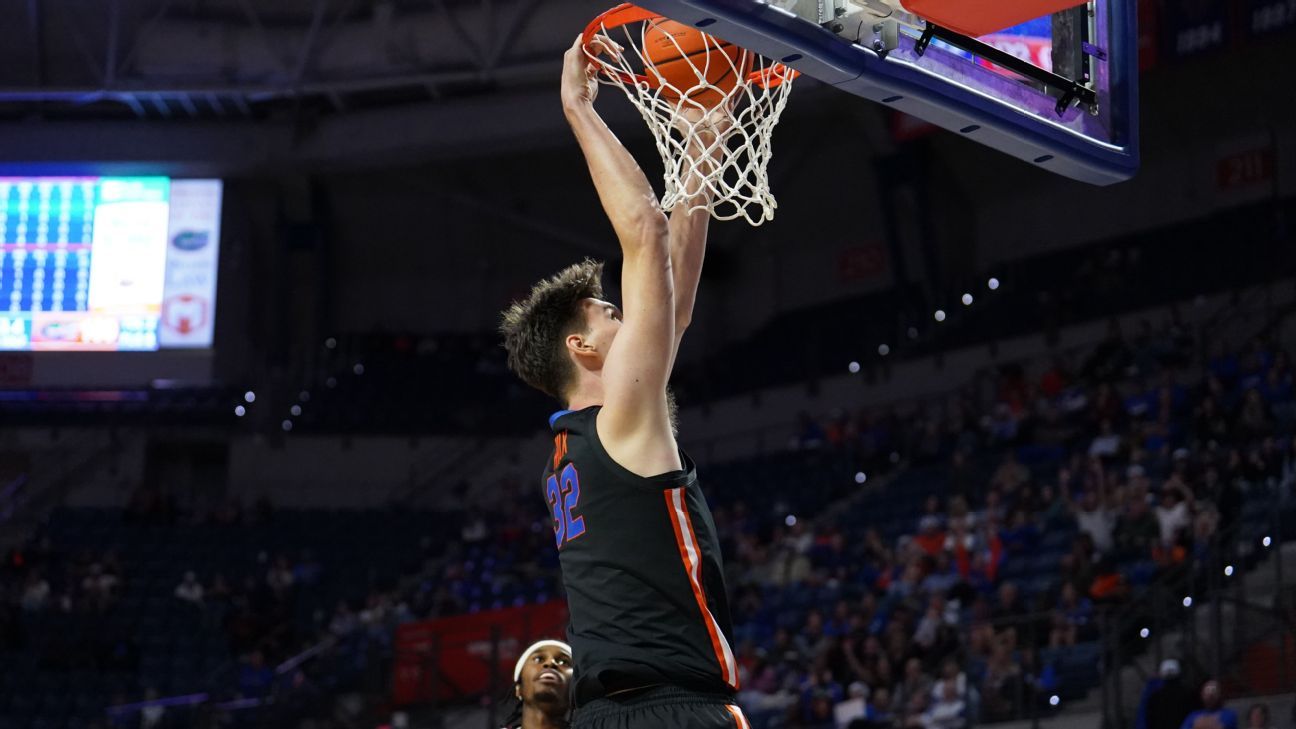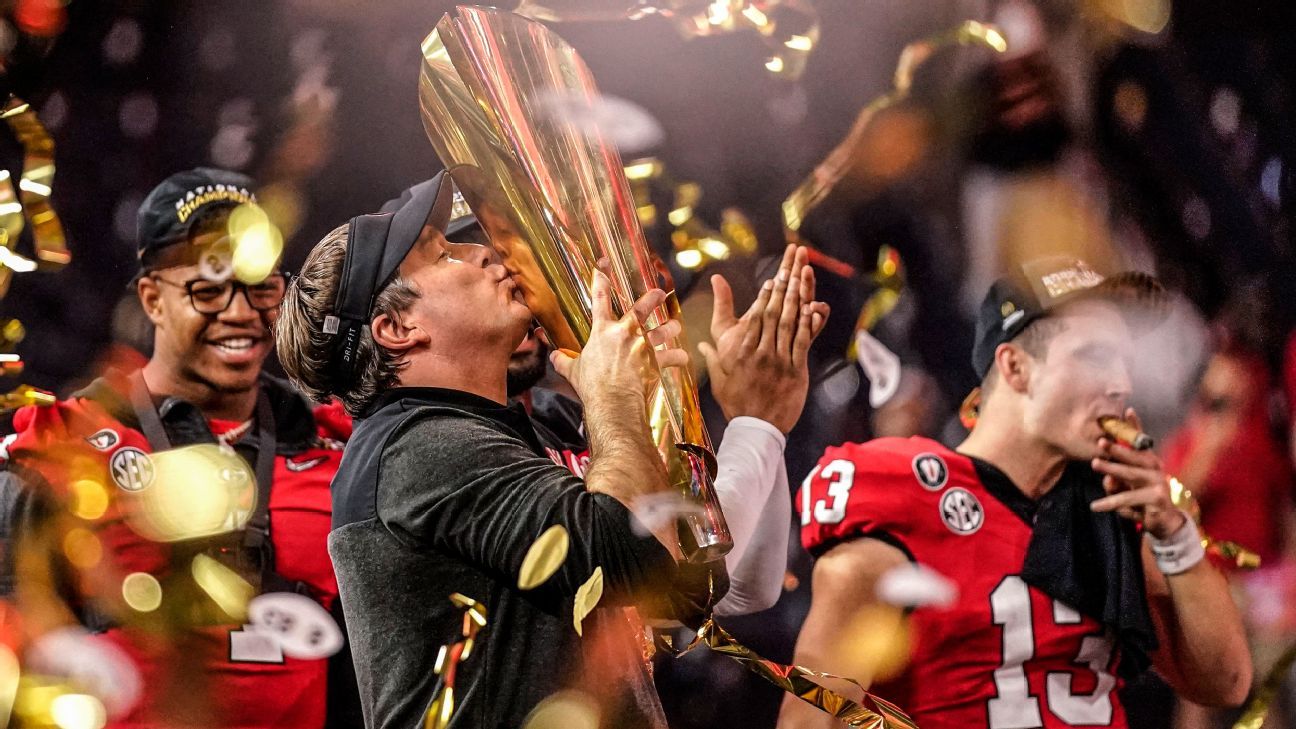Jeff Wagenheim
Sep 9, 2025, 07:06 AM ET
Terence Crawford made a big, bold splash in becoming a boxing world champion for the first time. He dethroned lightweight titlist Ricky Burns in March 2014 in the Scotsman's backyard, walking into a hornet's nest to the sound of ear-splitting singing and hand clapping in Glasgow to dominate the hometown hero. As an unfazed 26-year-old, Crawford appeared to have a long, glorious future ahead of him with the WBO 135-pound title.
Barely a year and just two title defenses later, though, Crawford was gone from the lightweight division. He moved up five pounds and immediately made his impact felt by the junior welterweights -- or at least the one in the ring with him in April 2015, fighting for the championship. Thomas Dulome hit the canvas three times on the way to a sixth-round TKO that earned Crawford the vacant WBO 140-pound title. With two belts in the trophy case, "Bud" was off and running on a full-speed-ahead career that, a decade later, has seen him move up again and again to win championships in four weight classes.
That is not even close to the most division titles won by a fighter in boxing history, a distinction held by eight-weight champion Manny Pacquiao. But Crawford's pursuit of bigger and better things has transcended physical size to embrace a different sort of immensity. He has been a pound-for-pound elite ever since the Burns fight, with all 18 of his bouts since then having had at least one title on the line, including a 2017 knockout of Julius Indongo that made Crawford the undisputed junior welterweight champion.
In July 2023 Crawford was in one of the biggest fights boxing had to offer. He was a slim betting favorite in a showdown with fellow welterweight champion Errol Spence Jr., but Crawford turned it into a one-sided showcase. He knocked down Spence three times and scored a ninth-round stoppage that made Crawford the undisputed welterweight champion and the first four-belt titlist at two weights.
Crawford could add a third undisputed title on Saturday (Netflix, 9 p.m. ET) when he challenges Canelo Alvarez, who holds all of the belts at super middleweight. That is the division for 168-pounders, a full 14 pounds heavier than the limit at junior middleweight, where Crawford is champion, but has competed only once. So Crawford is moving up not one but two weight classes to challenge the biggest star in boxing.
This is an impressive undertaking, but not unprecedented. Canelo was once a junior middleweight champion as well, and before winning his current belts, he unified three titles in the division in between, middleweight. He also won a light heavyweight title (175 pounds) when he defeated Sergey Kovalev by 11th-round KO in 2019. So Canelo knows what it feels like to fight in bigger weight classes. He just doesn't know what it's like to make that hefty climb in one fell swoop.
Through boxing's long history, few fighters have done what Crawford is setting out to do. But the sport has seen its most notable names step up in big ways. Here are some memorable examples.
Henry Armstrong vs. Barney Ross
May 31, 1938, at Madison Square Garden in New York
Weighing the stakes: Armstrong, the champion at featherweight (126 pounds), challenged Ross for his title at welterweight (147 pounds), which was two divisions heavier at the time but in today's boxing would be four divisions up from featherweight.
He fought nearly a century ago, but Armstrong remains a distinguished figure in the sport. He ensured that during a nine-month span, making history that has yet to be duplicated. First, Armstrong knocked out Petey Sarron on Oct. 29, 1937, to become featherweight champion. The following May 31, he beat Barney Ross for the welterweight title, skipping right over lightweight. Not for long, though. Less than three months after winning the 147-pound belt, he dropped to 135 to beat Lou Ambers on Aug. 17 for the lightweight title. At that point, Armstrong reigned simultaneously in three weight classes, something no one has done since.
Armstrong vs. Ross is especially notable in light of the changing landscape of boxing. Those two fought when there were just eight weight classes (heavyweight, light heavyweight, middleweight, welterweight, lightweight, featherweight, bantamweight and flyweight). Nowadays, men's boxing has 17. In today's boxing, Armstrong would be jumping four weight classes to get to Ross. Spoiler alert: Eighty-seven years later, no one has bettered that moxie.
Sugar Ray Robinson vs. Joey Maxim
June 25, 1952, at Yankee Stadium in New York
Weighing the stakes: Robinson, the champion at middleweight (160 pounds), challenged Maxim for his light heavyweight (175 pounds) title.
New York City was in the midst of a record-breaking heatwave, and the temperature in the ring under the outdoor lights reached 104 degrees Fahrenheit. It was so oppressively hot that referee Ruby Goldstein had to be replaced after Round 10 by Ray Miller and was helped groggily from the ring. The heat also wore down Robinson, who in the early parts of a fight scheduled for 15 rounds, appeared to be on his way to adding Maxim's light heavyweight title to the middleweight title he already had. But Robinson gradually withered in the severe conditions and under the heft of Maxim, 15 pounds heavier and leaning on him at every opportunity. "Sugar Ray," well ahead on all the scorecards, staggered to his corner after Round 13 and could not answer the bell for the 14th.
It was the only stoppage defeat among Robinson's 201 fights over a 25-year pro career. And what a career it was. Robinson went into the Maxim bout with a record of 132-2-2 after having run off a 91-fight unbeaten streak that lasted over eight years (from Feb. 19, 1943 to July 10, 1951). He retired after falling short against Maxim, only to return nearly three years later to regain the middleweight championship and further build a legacy that is widely recognized as the greatest in boxing history.
Michael Spinks vs. Larry Holmes 1
Sept. 21, 1985, Riviera Hotel & Casino in Las Vegas
Weighing the stakes: Spinks, the champion at light heavyweight (175 pounds), challenged Holmes for his heavyweight (over 205 pounds) title.
Holmes was one small speed bump away from matching Rocky Marciano's heavyweight record of 49-0. It was a "small" speed bump because the challenger, Spinks, was stepping up from the 175-pound division, where he was champion. At weigh-ins for the heavyweight title bout, Holmes stepped on the scale at 221.5 pounds, while Spinks had bulked up to an even 200 for the 15-round bout.
The 48-0 Holmes was an enormous betting favorite, having made 19 successful defenses of the heavyweight title, one of them a knockout of Spinks' big brother, Leon, four years earlier. But Spinks utilized elusive footwork to avoid Holmes' power while landing just enough offense to win narrowly on all three scorecards (143-142, 143-142 and 145-142). Spinks became the first light heavyweight champion to win the heavyweight title, and the victory made Michael and Leon the first brothers to be heavyweight champs.
Thomas Hearns vs. Dennis Andries
March 7, 1987, at Cobo Hall in Detroit
Weighing the stakes: Hearns, the champion at junior middleweight (154 pounds), challenged Andries for his light heavyweight (175 pounds) title.
Hearns had tried moving up in weight from 154 to 160 pounds for a championship less than two years before and had made history -- just not the kind of history a fighter dreams of. Back in 1985, Hearns challenged Marvin Hagler for the undisputed middleweight title, and the bout is remembered as one of the greatest in boxing history. Their ferocious back-and-forth in Round 1 was heart-stopping. But by the third round, it was Hearns who was stopped, chased on wobbly legs across the ring and flattened.
Now Hearns was making another move up, this one was even bigger. Rather than taking on a middleweight or even a super middleweight, he challenged Andries for the title at 175 pounds. But Andries did not bring the violence that Hagler had, and Hearns and that big right hand of his were at their brutal best. He knocked down Andries six times, including four in Round 6 (leading to a rare 10-5 score). On a night when Hearns became light heavyweight champion, "The Hitman" was the one doing the hitting.
Roy Jones Jr. vs. John Ruiz
March 1, 2003, at Thomas & Mack Center in Las Vegas
Weighing the stakes: Jones, the champion at light heavyweight (175 pounds), challenged Ruiz for his heavyweight (over 200 pounds) title.
Jones was too fast for the middleweights, super middleweights and light heavyweights, he had faced throughout his career. How was a heavyweight, especially a slow-footed Ruiz, supposed to keep up? This was easy work for Jones, who used hand speed and slick footwork to control the fight, staying out of danger and finding the target with his own offense. Jones earned a lopsided decision (118-110, 117-111 and 116-112) to become the first former middleweight champion in over a century to win the heavyweight belt.
Jones did not remain at heavyweight after this fight, and despite weighing in at just 193 pounds to face the 226-pound Ruiz, Jones never looked the same after dropping back down to light heavyweight. He eked out a majority decision over Antonio Tarver later in 2003 but then lost three in a row, including twice to Tarver. Moving up to heavyweight took its toll on Jones.
Amanda Serrano vs. Heather Hardy
Sept. 13, 2019, at Madison Square Garden in New York
Weighing the stakes: Serrano, the champion at junior bantamweight (115 pounds), challenged Hardy for her featherweight (126 pounds) title.
This was a leap of 11 pounds and three weight divisions, but it was nothing new for Serrano, who had already joined Manny Pacquiao as the only boxers to win championships in seven weight classes. It wasn't all upward movement for Serrano, either, as she had dropped 17 pounds for a 2017 title shot at bantamweight (118 pounds) just a few fights after winning the belt at lightweight (135).
By the time this fight came along two years later, Serrano had bounced around and won title bouts at junior featherweight (122 pounds), junior welterweight (140 pounds) and junior bantamweight (115 pounds). Then she made the big move to challenge Hardy, and Serrano was up to the task, dominating her Brooklyn long-time friend.
These aren't exact fits, but still ...
David Haye vs. Nikolai Valuev: Nov. 7, 2009, at Nuremberg Arena in Germany
Haye was the reigning cruiserweight champion, so challenging Valuev for the heavyweight title involved a move up just one weight class. But the true size disparity became evident when Haye stepped into the ring with Valuev, a 7-footer who weighed in at 316 pounds. Haye is not a small man -- he's 6-foot-3 and hit the scale at 217 -- but the promoter's "David vs. Goliath" hype was only slightly hyperbolic. When these two boxers went toe to toe, it appeared to be an optical illusion. How could they both be in the same weight class? But as fighters, Haye and Valuev were well matched, and their title bout, while not action-packed, was tightly competitive for all 12 rounds. One judge scored it a draw, but the others awarded Haye a majority decision that made him a champion in boxing's glamour division.
Manny Pacquiao vs. Antonio Margarito: Nov. 13, 2010, at AT&T Stadium in Arlington, Texas
Pacquiao is boxing's unmatched king of moving up in weight at a championship level. He first won a world title at age 19 in 1998 at flyweight (112 pounds). By 2010, he had captured titles in an unprecedented eight weight classes, the latest being the 154-pound junior middleweight division. Pacquiao moved up gradually, though one 18-month stretch is worth noting. Over the course of four fights in 2009 and 2010, Pacquiao went from champion at lightweight (135 pounds) to becoming champ at junior welterweight (140 pounds, beating Ricky Hatton), then welterweight (147, beating Miguel Cotto), then (after one welterweight title defense) junior middleweight (154 pounds, beating Margarito). That's a PacMan on the move.


















































